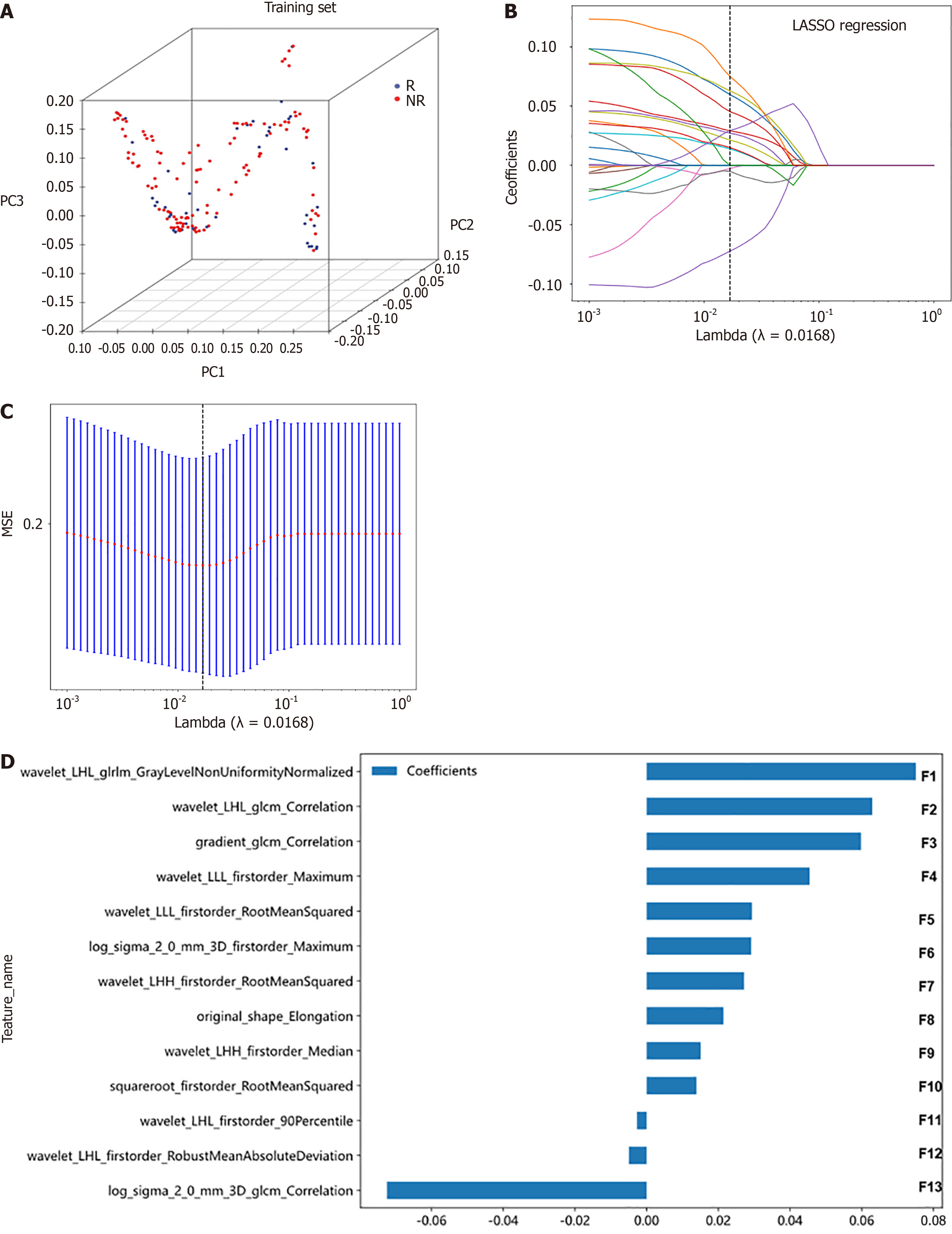Copyright
©The Author(s) 2025.
World J Gastrointest Surg. Jun 27, 2025; 17(6): 106155
Published online Jun 27, 2025. doi: 10.4240/wjgs.v17.i6.106155
Published online Jun 27, 2025. doi: 10.4240/wjgs.v17.i6.106155
Figure 2 Selection of radiomic features using the least absolute shrinkage and selection operator regression model.
A: Diffusion maps displaying patient clusters based on radiomic features in training set; B: Least absolute shrinkage and selection operator (LASSO) coefficient profile plot showing various log (λ) values; The vertical dashed lines indicate the 13 radiomic features with nonzero coefficients selected using the optimal λ value; C: Selection of the LASSO model’s tuning parameter (λ) utilizing 10-fold cross-test via the minimum criterion, with vertical lines indicating the optimal λ value. 10-fold cross-test was employed for parameter tuning; D: Distribution of the 13 radiomic features with nonzero coefficients. R: Bowel resection group; NR: Non-bowel resection group; MSE: Mean squared error; PC: Principal component; LASSO: Least absolute shrinkage and selection operator.
- Citation: Li DL, Zhu L, Liu SL, Wang ZB, Liu JN, Zhou XM, Hu JL, Liu RQ. Machine learning-based radiomic nomogram from unenhanced computed tomography and clinical data predicts bowel resection in incarcerated inguinal hernia. World J Gastrointest Surg 2025; 17(6): 106155
- URL: https://www.wjgnet.com/1948-9366/full/v17/i6/106155.htm
- DOI: https://dx.doi.org/10.4240/wjgs.v17.i6.106155









